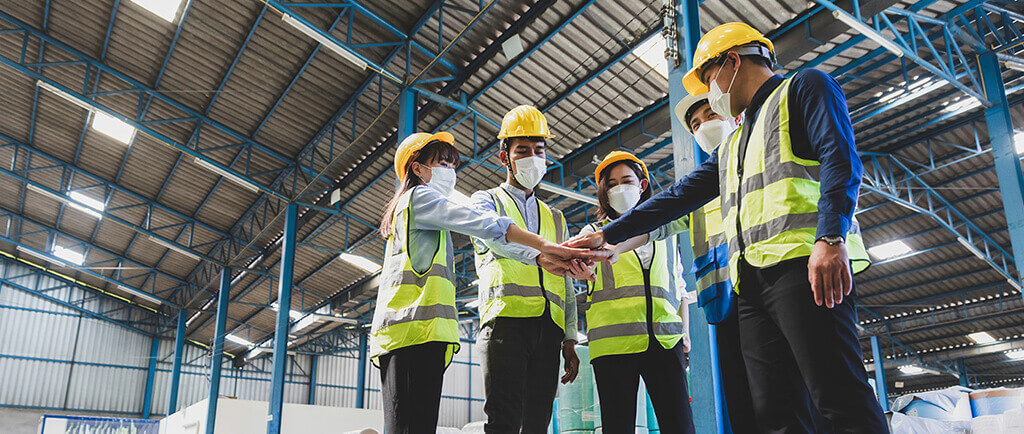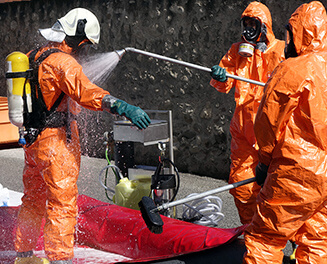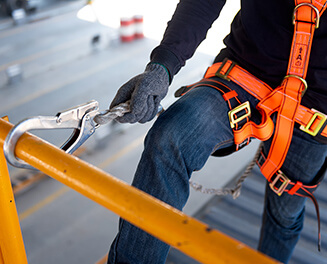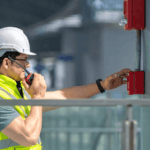
Safety Culture – What It Means And How To Build A Culture of Safety.
Your safety culture is a reflection of your values and priorities and it’s something that your employees, customers and regulators will assess you on. And with today’s swift-changing business environment a safe work culture can be the most integral component in Organizational Development towards sustainability, governance and compliance initiatives.
While safety is a top priority at all companies, not all of them have imbued a strong safety culture. There are numerous things you can do to develop or improve your current safety practices and it all starts with creating a safety-conscious attitude.
Through this blog post, we’ll take you through the various ways by which you can build and fortify the safety culture in your organization.
See how Safetymint can help in managing incidents
What Is a Safety Culture?
Safety culture results from the shared beliefs, values and behaviors that guide an organization’s approach to creating a safe, healthy and sustainable work environment. Strong safety culture is grounded in a set of values, policies and practices and can be thought of as the collection of the behaviors and actions that every stakeholder take to ensure their safety and that of others.
A good safety culture exists when everyone, irrespective of the position or place, have inculcated a discipline to follow the rules and are inspired to work together for a greater, common good.
It’s the sum of all of the things that go into making a workplace safe, such as:
Safety policies and procedures: These are well-researched and documented guidelines on what one should do in certain situations. For example, they may include instructions for dealing with lifting heavy loads or using machinery safely.
Training & Coaching programs: Both Employees and Management leaders must be trained and upskilled on how to perform their jobs safely, including using equipment properly and be aware of associated risks, hazards, and control measures that are available.

Management commitment and leadership: Management plays a vital role in creating a safety culture by setting expectations for employees to follow safety policies and procedures, providing training when necessary, encouraging workers to use safe work practices on the job and rewarding workers who demonstrate good performance in this area.
10 Ways to Build a Safety Culture That Lasts
The development of a safety culture can be described as a journey, not a destination. It must be effectively managed over time, focusing on continuous improvement and reinforcement of critical behaviors. Here are 10 ways to build a safety culture in your organization.
Create Awareness About Safety Hazards
The first step to building a safety culture is to develop your awareness of the risks, hazards and control measures in your workplace. This will help identify and eliminate any potential problems before they become serious.
Once you have a clear picture of what could go wrong, you can start planning ways to prevent workplace incidents and improve the safety of your employees.

Make Safety a Habit!
In a siloed organization, it’s easy for people to fall into habits that put them at risk — like working alone or taking shortcuts when they’re pressed for time. Implementing behavioural change needs to happen from top to bottom starting with Leadership followed by in-person interventions with employees and contract workers.
This means that everyone needs to understand the concept of Behaviour Based Safety Observations, how to report incidents, take appropriate actions when they see a safety violation or potential hazard, and ensure that they follow all safety rules and regulations.
If you want people to report non-compliance, then it’s important that they know what constitutes a non-compliance. That means training them on what it means to identify compliance issues, recognize risks, know the hazards and consequences and take corrective measures appropriately.
Integrate Safety KPIs into Job Responsibilities
Make sure that everyone in the organization understands their role in creating a safe culture. This is especially important for frontline managers and supervisors. Create and integrate KPIs into OKRs and set safety-specific goals with recognition and rewards.
You need to ensure that every one understands the importance of safety and see it as part of their job description. You can do this by having regular safety meetings, where you discuss new safety policies and procedures and the actions every individual needs to follow according to the safety guidelines.
Reinforce the Right Behaviors
Your company needs to focus on behavior — what people do, not just what they say. You have to get people engaged at the highest levels of your organization, from executives to managers and supervisors, who set the tone for others on safety issues. You may want to refer some of the proven frameworks for habit-formation and behavioural change have been used by HR Managers and Coaches in instilling the right mindset for safe work culture.

Create A Feedback Loop
Feedback loops help us identify problems before they become big issues. If you want your organization’s culture to be strong and healthy, create feedback loops between employees and management through regular meetings or check-ins. Nir Eyal’s Hook model is an interesting insight in to habit-formation.
Develop a “No Blame” Culture
All too often, workers are afraid of retaliation when they point out potential problems or unsafe conditions in their work environment. This fear can lead to silence by employees who witness unsafe practices or situations that could lead to injury or illness. If you want your organization’s safety culture to succeed, you need people who feel comfortable bringing up concerns without fear of retribution.

When employees know they won’t be blamed for taking reasonable steps to keep themselves and others safe, they are more likely to report hazards and injuries, even if they were involved in them. Employees should feel comfortable reporting unsafe conditions without fear of retaliation from supervisors or peers — no matter who was at fault.
Recognize and Reward Positive Behaviors
You need incentives and rewards for those who promote safety within your organization. It’s important that these rewards be based on actual results, such as reduced injuries or illnesses, rather than simply rewarding everyone equally regardless of their performance in promoting safe practices.
You can provide employees with an online safety management tool like Safetymint through which they can report the safety incidents, violations and unsafe practices in the workplace. This will also help you easily keep track of the employees who promote safety practices and strive to make the workplace safe.
Develop a Top-Down Approach
The best way to develop a strong safety culture is through leadership from the top down. If leaders don’t support safety by example, their employees won’t either.
If you’re a leader and want to create a safety culture in your organization, start by asking yourself: What is my personal safety commitment? Can I model it for others? If not, why not? What can I do to change that?

Similarly, make sure that the other people at the top management are taking action as well. Ask them what they’re doing to build a safety culture in their departments or teams — and hold them accountable for their actions.
Regularly Measure the Level of Safety
An excellent way to measure progress is through quarterly surveys of employees about their perception of safety in their work environment. You can also conduct anonymous interviews with employees from different levels of your organization to find out what’s working well and where there are gaps in communication or training.
It’s important to measure performance against key indicators that reflect the health of your organization’s culture — such as turnover rates and injury rates. These metrics will help you identify areas where improvements are needed so that everyone feels safe at work every day.
It can be hard to keep track of the safety violations, conduct root cause analysis and measure the safety levels. This is where a simple, cloud-based tool like Safetymint can solve the problem.
With the guest user licenses offered by Safetymint, every employee can have the Safetymint mobile app installed on their smartphones and report safety issues instantly from wherever they are with minimal effort. This way, you can make it easy for the employees to develop a better working environment and also make use of the various features in the application to assess and identify hazardous or high-risk areas in your workplace.
Request a free trial of Safetymint to get started.

K Pradeep is the Founder and Head of Product Development at Safetymint



